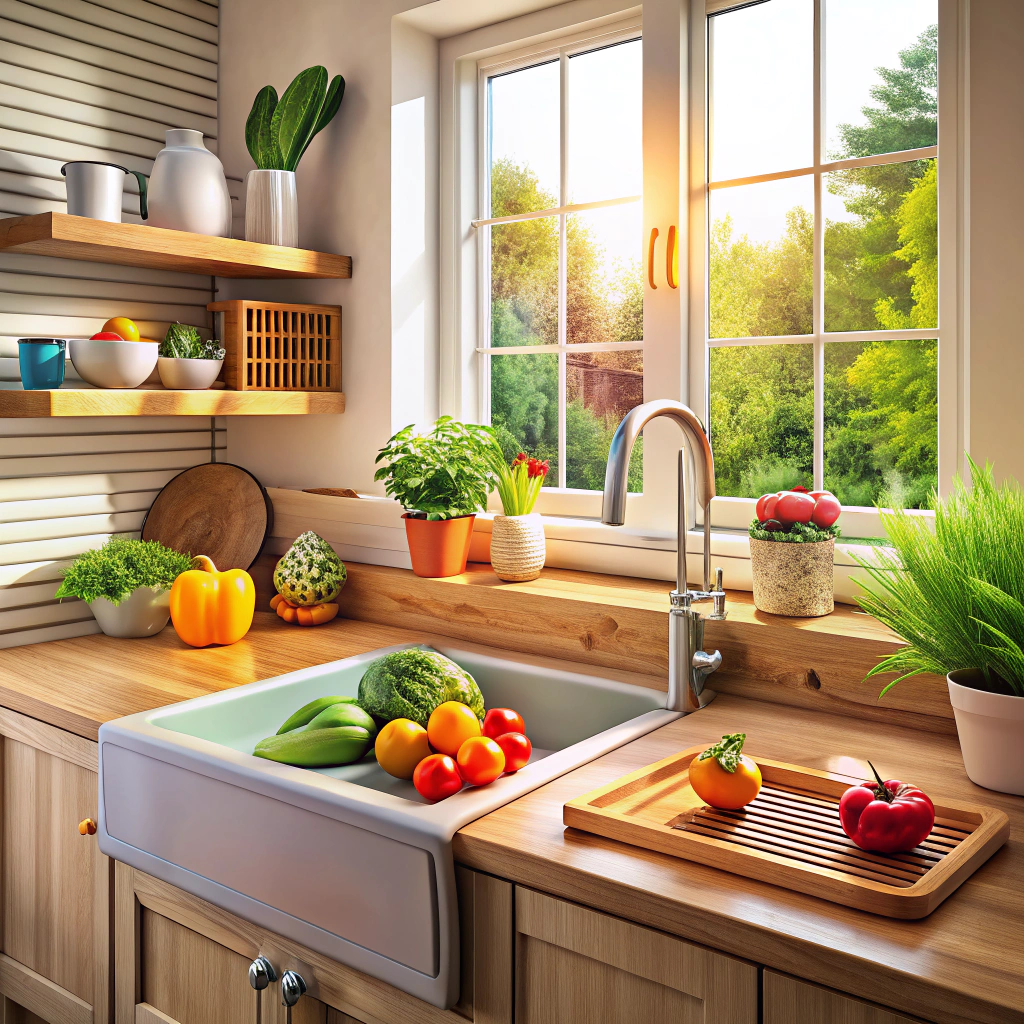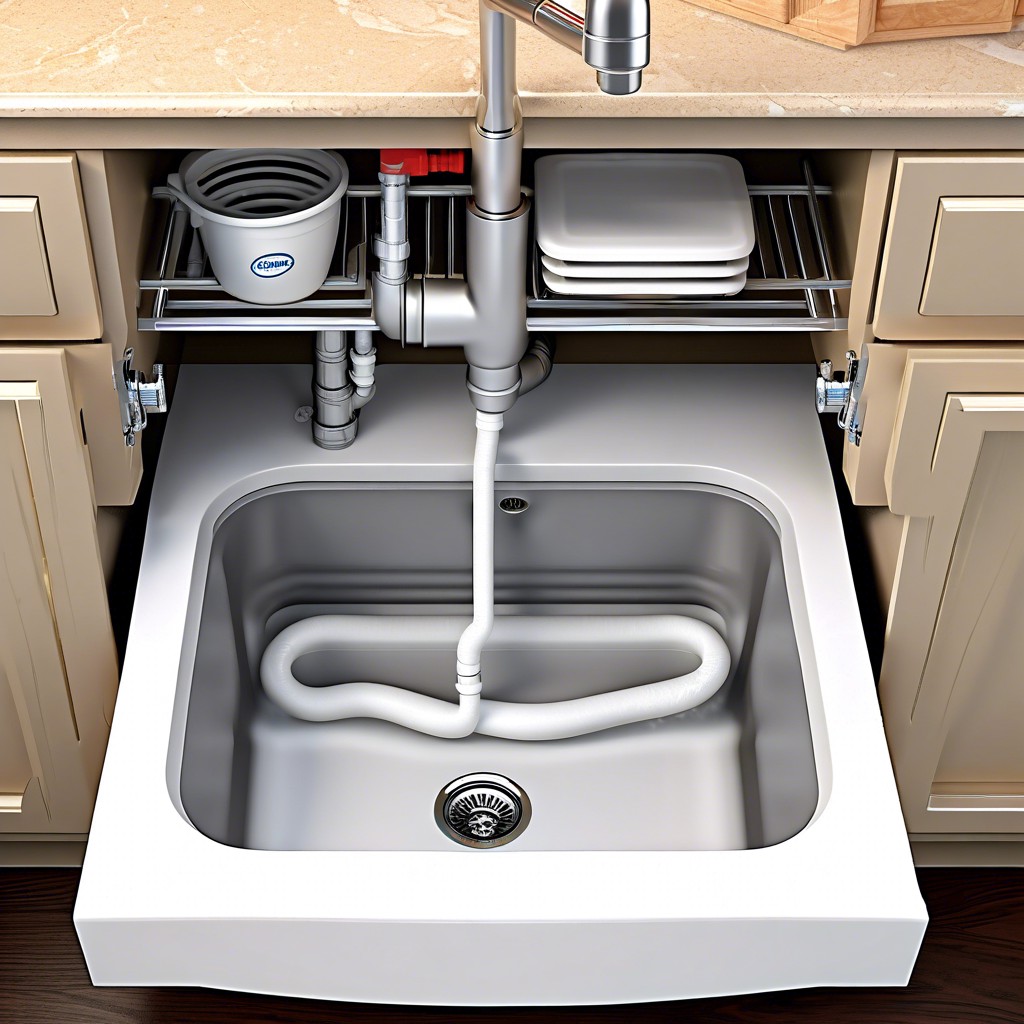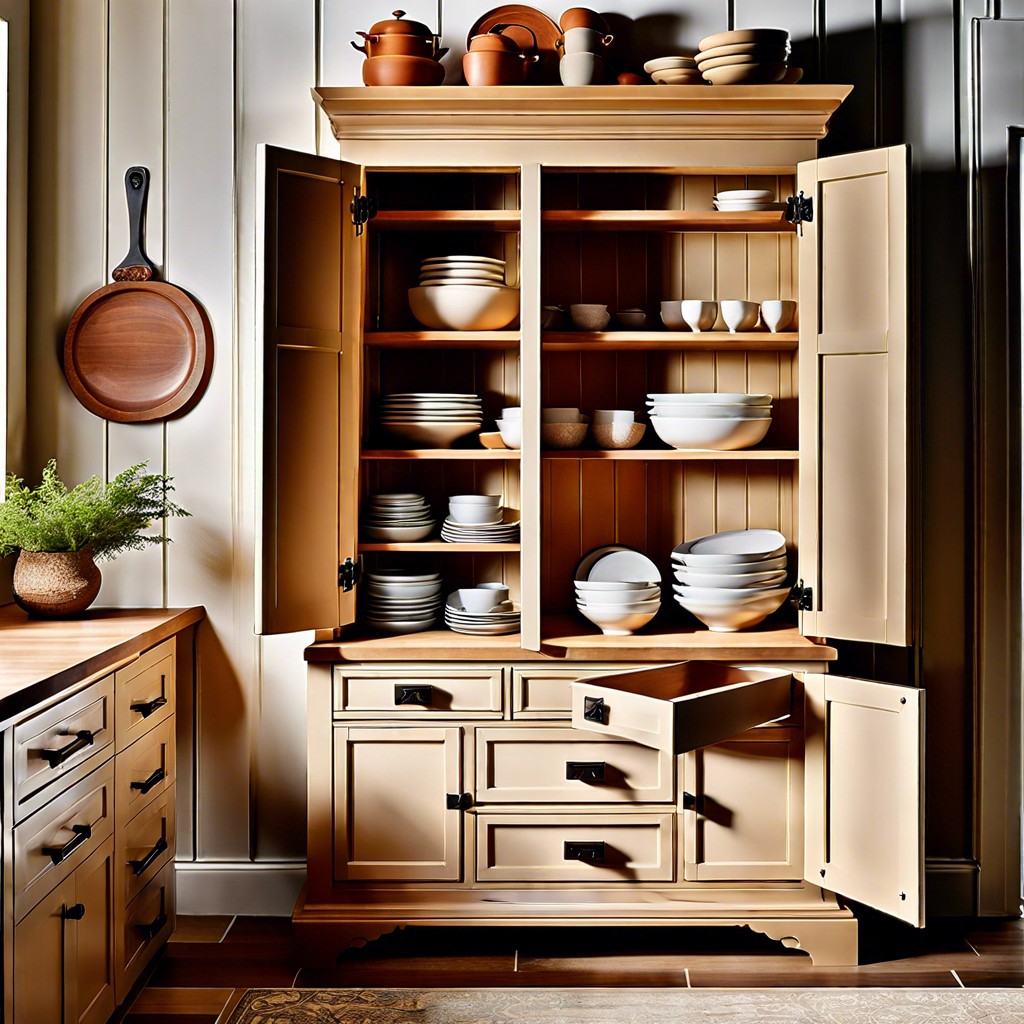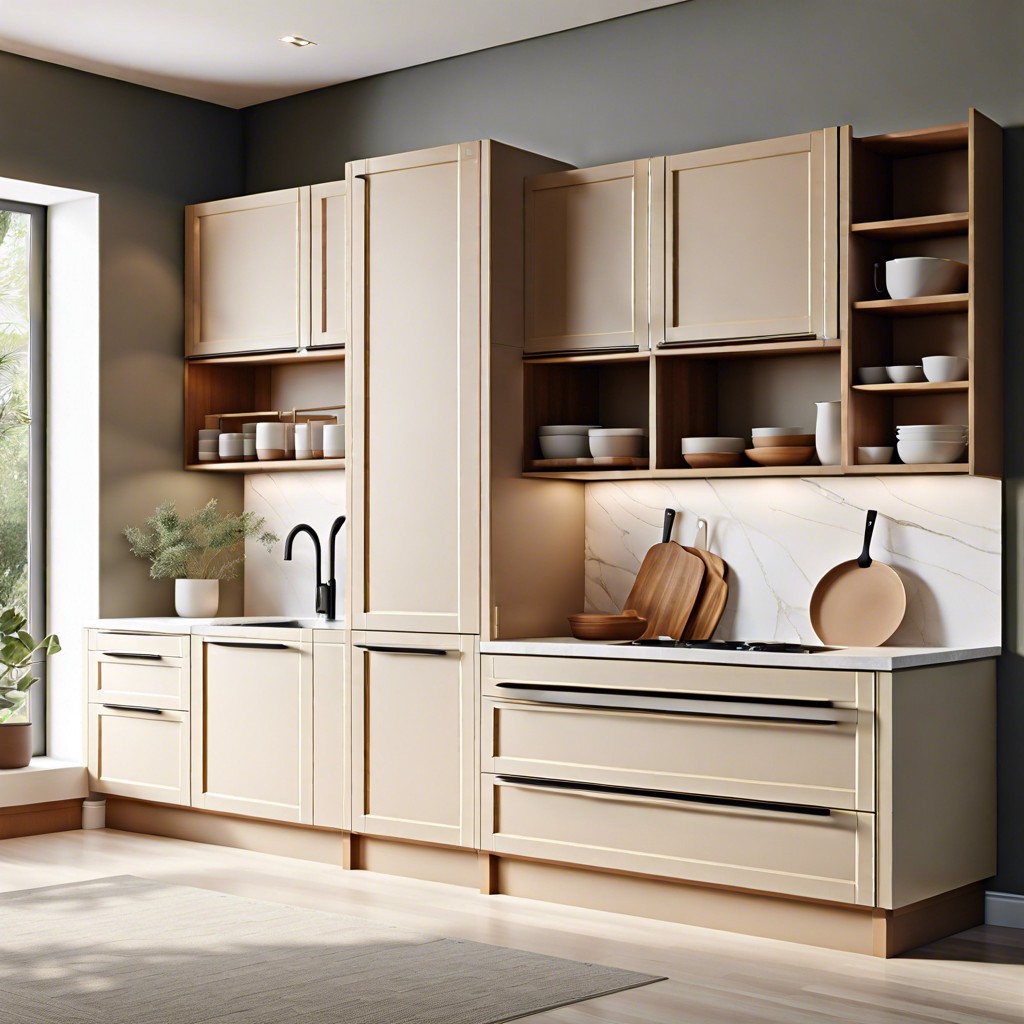Last updated on
Discover the standard heights and variations of kitchen cabinets to plan your perfect kitchen layout.
Finding the right kitchen cabinet heights can feel like searching for the elusive “perfect” avocado—tricky but oh-so-satisfying when you get it right. Lucky for you, we’ve cracked the code on base, wall, and tall cabinet dimensions, covering everything from heights to depths. Stick around, and you’ll get all the measurements you need, spiced with a dash of humor. Ready to transform your kitchen into the culinary paradise of your dreams? Keep reading!
Key takeaways:
- Standard base cabinet height: 34.5 inches, comfort at 36 inches.
- Wall cabinet height: 30 to 42 inches, match storage needs.
- Tall cabinet height: 84 to 96 inches, sizeable storage space.
- Base cabinet depth: 24 inches standard, options cater to needs.
- Wall cabinet depth: 12 to 24 inches, balance storage and space.
What's Inside
Base Cabinet Dimensions
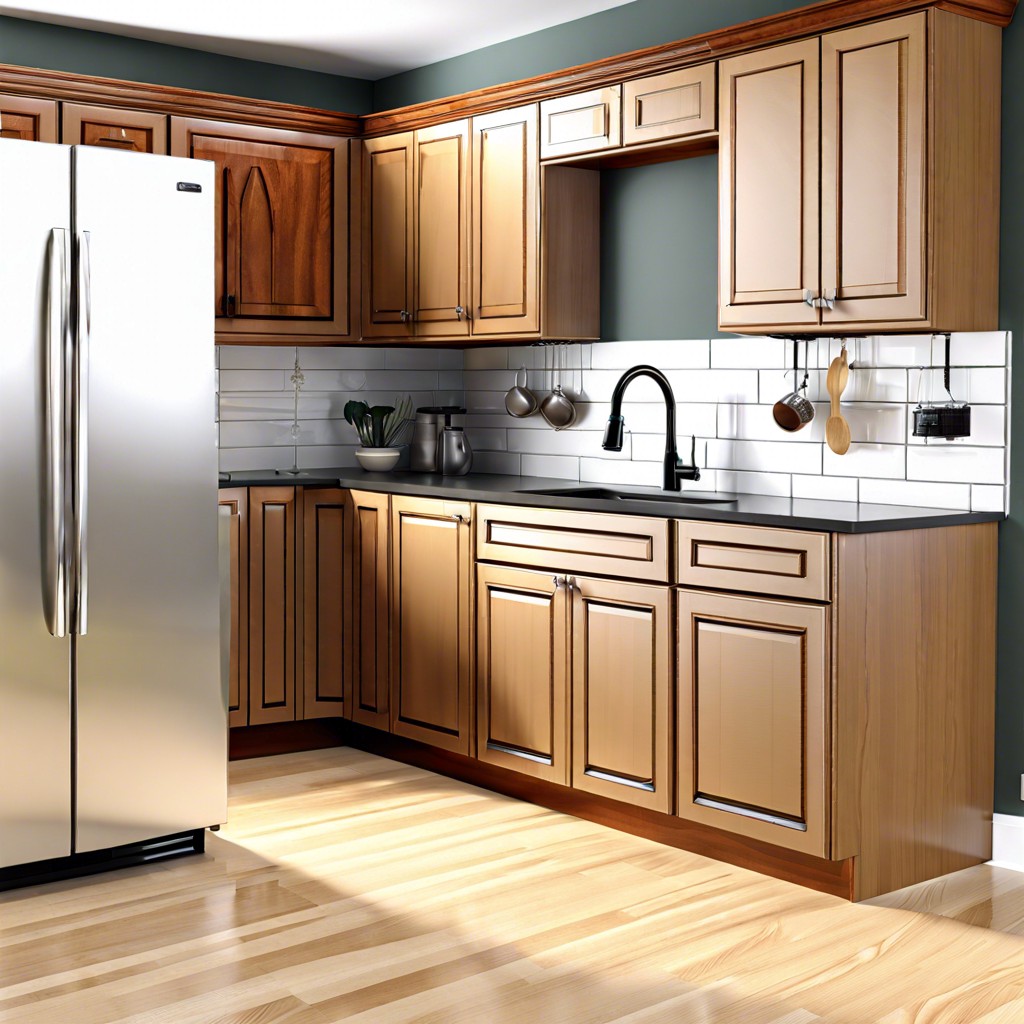
Standard base cabinets typically have a height of 34.5 inches without countertops. Once you add countertops, the height usually reaches about 36 inches, which is pretty back-friendly for most people.
Depth, another important dimension, is generally 24 inches. This depth allows enough room for sinks, stovetops, and prep space while keeping everything within comfortable reach.
Widths can vary more widely. You’ll find base cabinets in widths of 12, 15, 18, 24, 30, 33, 36, and 48 inches. This flexibility allows for customization, making it easier to shove in that fancy wine cooler or oversized farmhouse sink you’ve always dreamed about.
And don’t forget about toe kicks. That recessed area at the bottom generally measures 3.5 inches in height and 3 inches in depth, so you won’t stub your toes while cooking up a storm.
Wall or Upper Kitchen Cabinet Sizes
Alright, time to talk about those floating wonders called wall cabinets. You know, the ones where we stash our secret snack stash, and occasionally a dish or two.
Most wall cabinets are around 30 to 42 inches in height. The choice depends on your ceiling height and how much storage you really want. For instance, a 30-inch cabinet leaves room for a classic touch with some crown molding, or even a display space up top for your collection of vintage cookie jars.
Wall cabinets are typically 12 inches deep. This is very Goldilocks – not too shallow, not too deep, just right for plates, bowls, and those giant novelty coffee mugs you swear you’ll use someday.
Don’t forget the width. Common sizes range from 9 to 36 inches wide, in 3-inch increments. This ensures you can mix and match sizes to fit your space perfectly.
Adjusting the height of these cabinets between the countertop and the underside of the cabinets usually goes from 15 to 18 inches, providing headspace while you whip up your culinary masterpieces.
So, when planning your kitchen, think about what you sneak into those upper cabinets. Quirky collections or practical pantry items – the choice is yours!
Tall Cabinet Dimensions
Tall kitchen cabinets, often known as pantry cabinets, are the giants of the kitchen world. They strut around, towering over base and wall cabinets, flaunting their height.
Typically, these cabinets range from 84 inches to a whopping 96 inches in height. That’s about 7 to 8 feet tall, making your cereal boxes feel like they’re living in a skyscraper.
They usually come in various widths, from a slim 12 inches to a more common 24 inches or even wider – it’s like choosing your favorite baguette in a bakery, but in wood form.
Depth can vary too, commonly at 12 or 24 inches. Think of it as having shallow or deep pockets, but for your pantry items.
These tall cabinets are brilliant for storing bulky items and small appliances. They might just be the hide-and-seek champions of kitchen storage.
In essence, if you want to stash your superhero-sized stock of pasta or create a neat little nook for your vacuum cleaner, these are your go-to cabinets. Just don’t forget where you placed things – you might need a treasure map to navigate!
Kitchen Base Cabinet Height
Standard base cabinets typically stand 34.5 inches tall. When you add the countertop, it often brings the total height to around 36 inches. Perfect for most people to comfortably chop veggies without straining their backs.
Adjustable legs or custom builds can give you a few extra inches if you need them. Super handy for our taller friends who always feel like giants in a tiny kitchen.
Don’t forget toe kicks—the recessed area at the bottom of the cabinet. These usually add another 3 to 4 inches of height and keep you from stubbing your toes while making your famous spaghetti sauce.
Kitchen Base Cabinet Depth
Standard base cabinets typically have a depth of 24 inches, providing a balance between storage capacity and ease of use. This depth allows for ample storage space for pots, pans, and kitchen gadgets without making it hard to reach the back.
For those with limited kitchen space, 12-inch deep base cabinets are sometimes used, especially in smaller kitchens or kitchenettes. These slimmer options can help maximize space without sacrificing too much storage.
On the other end of the spectrum, deeper cabinets, around 30 inches, are rare but can be found in custom kitchens. These are perfect if you’ve got a lot of large kitchen items or love cooking with extensive equipment.
One important thing to note: deeper cabinets will limit your floor space, making the kitchen feel cozier—or let’s be honest—more cramped!
Remember, when incorporating deeper base cabinets, consider your countertop overhang for a smooth, finished look that’s both functional and aesthetically pleasing.
Kitchen Wall Cabinet Height
Generally mounted 18 inches above the countertop, these cabinets typically start at a height of 30 inches. Need extra space? Go for 36 or even 42 inches.
Consider the ceiling height. For standard 8-foot ceilings, 30 to 36-inch cabinets fit nicely. Got 9-foot ceilings? 42-inch cabinets look elegant and maximize storage.
Accessibility matters. If you’re not starring in the NBA, avoid overly tall cabinets. No one wants a step stool as a permanent kitchen accessory.
Think about your kitchen tasks. Frequently used items should be within easy reach. That charming teapot collection can stay on the highest shelf.
Remember the use of decorative crown molding. It can eat up some vertical space, so leave room for it if it’s part of your vision.
Kitchen Wall Cabinet Depth
Now, onto the depth of those kitchen wall cabinets. Standard depths usually range between 12 and 24 inches. Going beyond that depth? You might need a stepladder just to reach those spice jars!
Why 12 to 24 inches, you ask? Here’s the scoop:
Shallow depths keep things accessible. It’s perfect for storing dishes, glasses, and small appliances without having them hibernate in the abyss.
Deeper cabinets maximize storage but can make kitchen space feel cramped. Think giant Tupperware containers taking over your life.
Shallow cabinets near the stove? Yes, please. Easy access to spices and oils without burning dinner – or yourself.
Depth affects counter space. Balance is key – too deep, and you’ll be bumping your head while chopping veggies. Ouch!
Choosing the right depth makes your kitchen more efficient and stylish. Plus, no one wants a forehead bruise with their morning coffee.
Kitchen Tall Cabinet Height
Tall cabinets, often called pantry cabinets, are the skyscrapers of your kitchen. They’re the storage superheroes where overflow dishes and Costco-sized containers find their homes. Typically, they stand between 84 to 96 inches tall, making them nearly ceiling height in standard rooms.
So why such height? Well:
First, maximizing vertical space. These cabinets take advantage of the entire room height, providing much-needed storage in a compact footprint.
Second, they help with organization. You can allocate different shelves for diverse items—canned goods, small appliances, baking supplies—all within one unit.
Next, they elevate the aesthetics. Tall cabinets create a seamless look, drawing the eyes upward and giving your kitchen an elegant, cohesive feel.
Lastly, they hide your clutter. Keep everyday messes behind closed doors, making your kitchen appear more tidy and streamlined.
Remember, if you’re vertically challenged, a step stool might become your new best friend.
Kitchen Tall Cabinet Depth
The depth of tall cabinets can vary, but most typically range from 12 to 24 inches. This dimension is crucial because it affects storage capacity and room flow.
Think of these cabinets as the skyscrapers of your kitchen storage. Some key points to consider:
Bigger isn’t always better: While deeper cabinets offer more storage, they can also intrude into the available space, potentially creating a cramped kitchen.
Accessibility matters: Deeper cabinets might mean more storage, but you may need a ladder to reach the back. Plan accordingly.
Appliance considerations: If housing large appliances like ovens, ensure the depth accommodates them comfortably. Extra deep cabinets can host built-in microwaves or even wall ovens.
Function over form: Don’t sacrifice accessibility for aesthetics. Ensure the cabinet depths work with your kitchen layout to avoid bumping into them mid-cooking spree.
Understanding these points will help you decide the right depth for your tall kitchen cabinets. No one wants to feel like they’re cooking in a sardine can!
How to Measure Kitchen Cabinets
Grab your tape measure and let’s get started. Measuring kitchen cabinets involves a few key dimensions. First, measure the height, from the bottom to the top of the cabinet. This is crucial for fitting under countertops or against ceilings.
Next, measure the width. Move horizontally from one edge to the other. For base cabinets, make sure to get this right for appliances and plumbing.
Finally, measure the depth. This is how far the cabinet extends from the wall. For base cabinets, this often includes the door thickness. Write it all down– no one wants to play the guessing game later.
Now, a quick reminder: when in doubt, always measure twice. The last thing you want is a cabinet that looks like it’s on a different wavelength from the rest of your kitchen.
